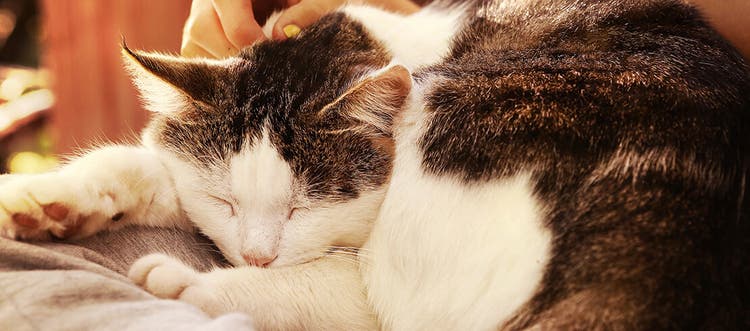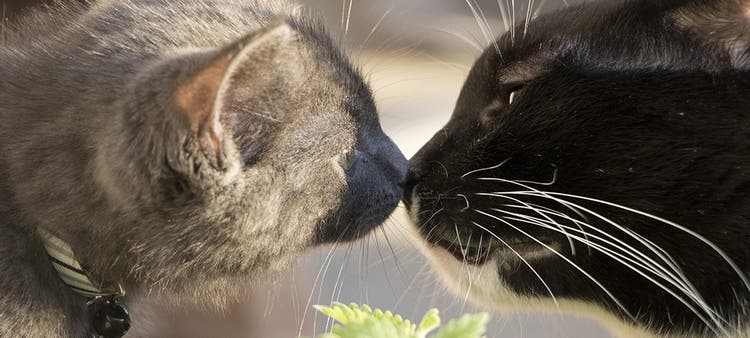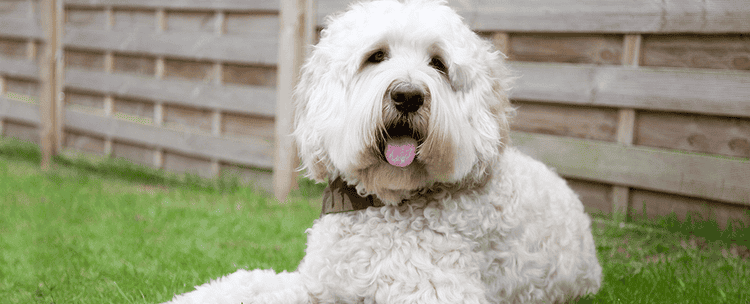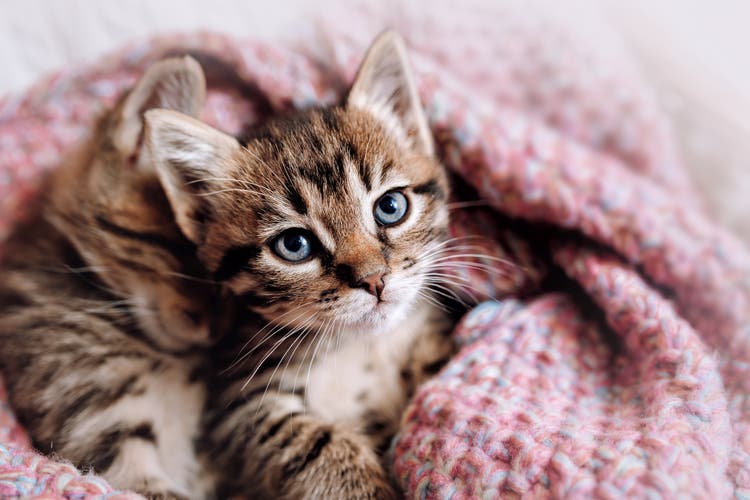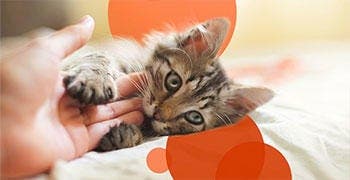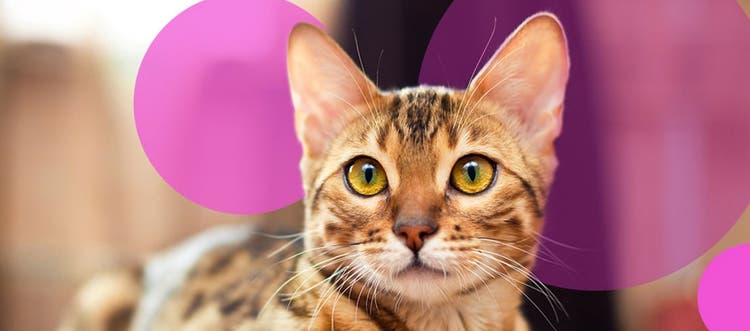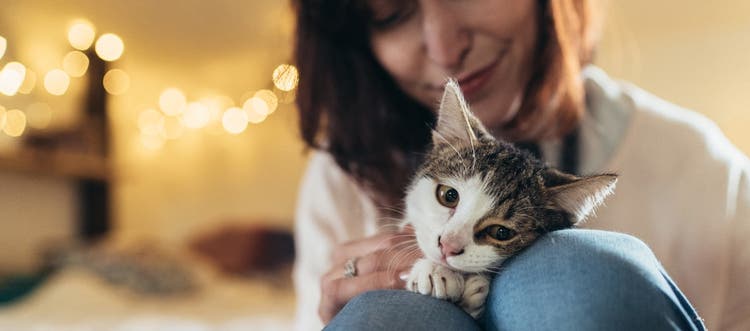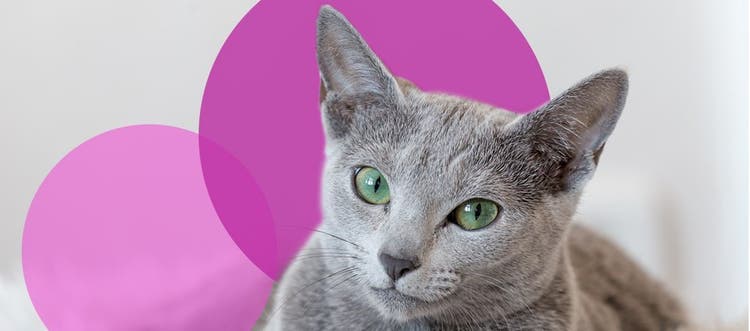Discover some of the friendliest cat breeds.
Two of the biggest myths related to cats are that they have nine lives and that they can be a pain to care for, by nature. Neither is true. Cats, of course, only have one life. And most cats spend that single life spreading joy. In fact, most cat breeds are good-natured and make great companions.
Cats may have developed a reputation as grumpy because of their intelligence and independence. Many cats are smart, clever and not bashful about letting you know how they feel. They also can entertain themselves. This doesn’t mean they don’t want to be cuddled or showered with attention — trust us, they do. It can mean they won’t let a little alone time ruin their spirits.
Top Five Friendly Cat Breeds
While all cats have unique personalities, these breeds are even more likely to be loving and friendly.
Siamese
Siamese cats have been portrayed as mischief-makers in movies over the years, but these felines are some of the most social, affectionate and fun pets to own. These beautiful cats usually have light-colored bodies contrasting with darker paws, ears and tails to go along with striking blue and slightly slanted eyes.
They are excellent communicators. You’ll always know where you stand with a Siamese, making it easy to please each other. Siamese cats are one of the few cat breeds that actually do not like to be left alone; these cats want to be the center of attention and are often considered the life of the party. They want to play games such as fetch, and they love hide-and-seek. Siamese will “talk” your ear off and let you know how they feel. These cats can live to be as old as 15, are perfect for big families and enjoy the company of other pets.
Ragdoll
The name of this cat comes from a love of nestling in a lap or being carried around the house by a child. These laid-back cats are very trainable and obedient and love nothing more than cuddling with their owners.
Ragdolls can live to be 17 and can weigh up to 20 pounds as one of the largest domestic cat breeds. They have long silky coats that don’t shed much, but will need combed at least twice a week — which they love.
When trained early, these cats can learn tricks, including paw shakes, sit commands and fetch. Ragdolls need affection and active households, and they’re great with other pets. These cats are resourceful enough to keep themselves entertained if left alone, as long as they’re properly trained. Of course, when you get home, they will probably be waiting for you at the door, ready to follow you around the house.
Burmese
The Burmese will reel you in with their wide, expressive eyes and sweet, gentle demeanor. They love to sit in laps, give kisses, hug and cuddle. Expect confirming purrs during lap sits and constant affection. You can also expect a curious cat that is playful and daring. These cats are born thrill-seekers. Whether they’re leaping off a couch to impress their owners or rummaging through the cabinets, they are constantly searching for … something.
The Burmese cat may hop in your lap when you’re at the computer to see what you’re working on or look out the window, staring in wonder at the world outside. They crave attention, but will entertain themselves with adventures as they try to satisfy their curiosity.
They have a hoarse-sounding voice, but they aren’t as talkative as some of the other friendliest cat breeds, such as the Siamese. They can live to be 13 and weigh as much as 12 pounds. Their coat is short and takes little grooming.
Maine Coon
Nicknamed “America’s cat” and hailing from New England, Maine coons are as large in size as they are in personality. These cats are sweet-natured and connect well with small children. Their long, silky fur is perfect for petting, but will shed. These cats are highly intelligent and enjoy a challenge; Maine coons love puzzles.
These cats have no problem being independent and will end any rodent problems at your house due to an inherent hunting instinct. They’ll accept any affection, too, and love a good combing and cuddle.
You’ve been warned: These cats are big. They can be 30 to 40 inches long and weigh as much as 25 pounds. The largest domestic cat in the “Guinness Book of World Records,” Stewie, was a Maine coon measuring more than four feet long. These cats can live to be 15 years old.
Abyssinian
Abyssinian cats are mischievous, super-energetic, attention-seeking and loyal. This rebel cat can be serious and focused one second, then silly the next. They’ll follow family members around and their curious nature can lead them to rummage through cabinets. They may try to climb every couch and chair, and search every inch of your home for fun. Buy Abyssinians a cat tower and plenty of games to keep them occupied — and off your shelves.
Abyssinians live every minute to the fullest and will enjoy all 15 years of their life. They typically weigh between six and 10 pounds. You’ll always know where they are in the house because they’ll be right next to you. Need help in the kitchen? The Aby won’t be much of an aid with the mixing bowl, but they will be right next to you when you pull that casserole out of the oven. Hop off the couch to go the bathroom? Expect your Aby to try to sneak in there with you. This cat will always be near and always having fun.
Choosing the Right Cat for Your Home
While this list provides a brief overview of the personalities and traits of friendly cats, it’s important to do your own research. Be sure to talk to your vet about the cat breeds your family is considering to discuss any breed-specific potential hereditary health issues to be aware of.
Remember that every cat has their own unique personality. All types of cats — from adoptable cats to rescue kittens to house-trained felines — are one of a kind and can be a great pet. Younger kittens may be moldable, while older cats will already be developed — and you will know if they’re obedient or not. The very best way to figure out if a cat is right for you and your family is to spend quality time together.
References
- International Cat Care. (2018, October 9) Siamese. Retrieved May 29, 2020, from https://icatcare.org/advice/siamese/
- Siamese. (n.d.) Retrieved May 29, 2020, from http://www.vetstreet.com/cats/siamese
- International Cat Care. (2018, October 4) Ragdoll. Retrieved May 29, 2020, from https://icatcare.org/advice/ragdoll/
- Ragdoll. (n.d.) Retrieved May 29, 2020, from http://www.vetstreet.com/cats/ragdoll
- International Cat Care. (2018, September 18) Burmese. Retrieved May 29, 2020, from https://icatcare.org/advice/burmese/
- Burmese. (n.d.) Retrieved May 29, 2020, from http://www.vetstreet.com/cats/burmese
- Maine Coon. (n.d.) Retrieved May 29, 2020, from http://www.vetstreet.com/cats/maine-coon
- International Cat Care. (2018, October 3) Maine Coon. Retrieved May 29, 2020, from https://icatcare.org/advice/maine-coon/
- International Cat Care. (2018, September 11) Abyssinian. Retrieved May 29, 2020, from https://icatcare.org/advice/abyssinian/
- Abyssinian. (n.d.) Retrieved May 29, 2020, from http://www.vetstreet.com/cats/abyssinian
Related Articles

New Cat or Kitten: Our Downloadable Guide
Thinking about adding a feline to the family? There are so many emotional, social and physical benefits to owning a cat. Check out our free guide, also available to download!
